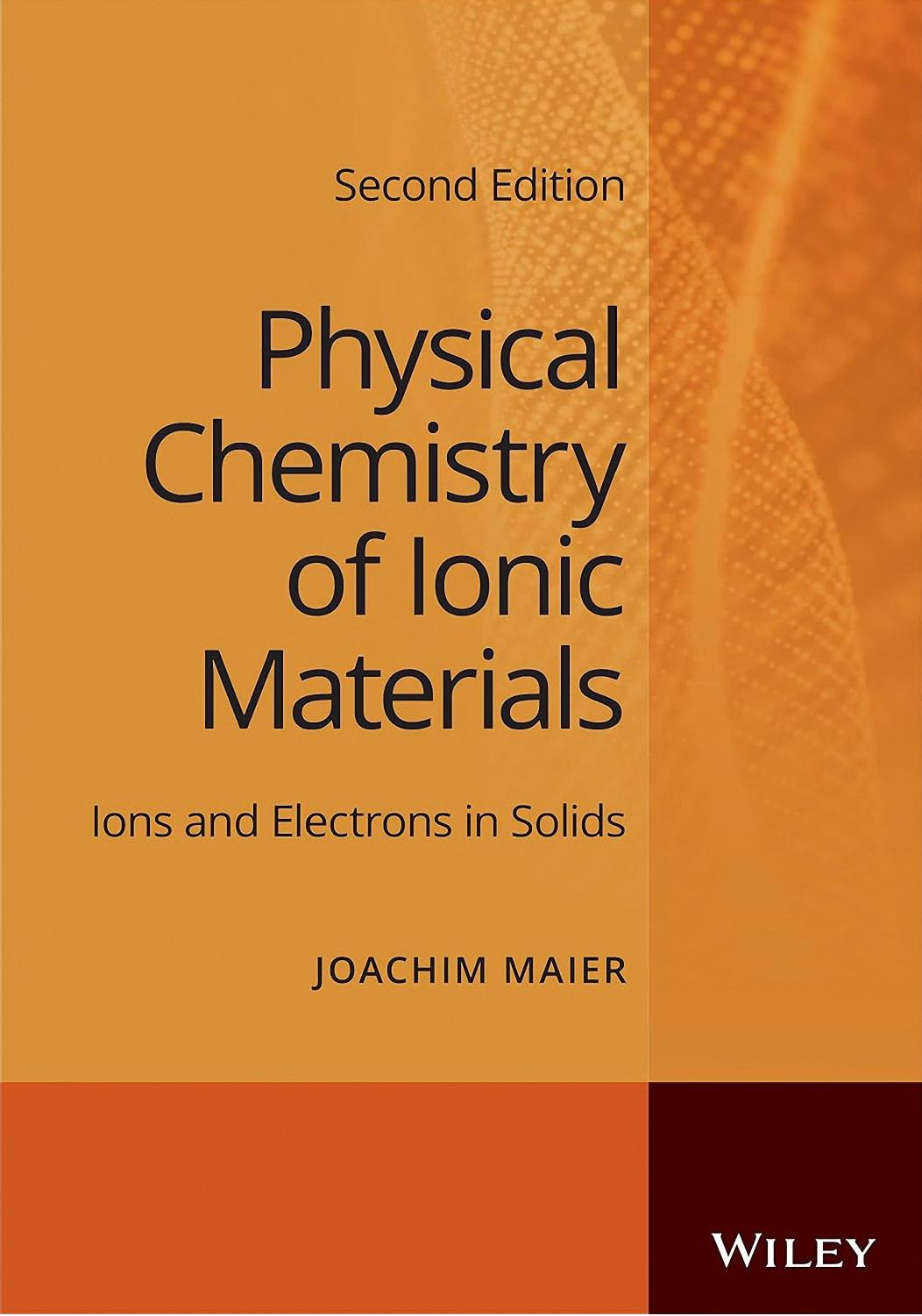

Most ebook files are in PDF format, so you can easily read them using various software such as Foxit Reader or directly on the Google Chrome browser.
Some ebook files are released by publishers in other formats such as .awz, .mobi, .epub, .fb2, etc. You may need to install specific software to read these formats on mobile/PC, such as Calibre.
Please read the tutorial at this link: https://ebookbell.com/faq
We offer FREE conversion to the popular formats you request; however, this may take some time. Therefore, right after payment, please email us, and we will try to provide the service as quickly as possible.
For some exceptional file formats or broken links (if any), please refrain from opening any disputes. Instead, email us first, and we will try to assist within a maximum of 6 hours.
EbookBell Team

0.0
0 reviews
ISBN 10: 1119799104
ISBN 13: 9781119799108
Author: Joachim Maier
Physical Chemistry of Ionic Materials
Discover the physical chemistry of charge carriers in the second edition of this popular textbook
Ionic and electronic charge carriers are critical to the kinetic and electrochemical properties of ionic solids. These charge carriers are point defects and are decisive for electrical conductivity, mass transport, and storage phenomena. Generally, defects are deviations from the perfect structure, and if higher-dimensional, also crucial for the mechanical properties. The study of materials science and energy research therefore requires a thorough understanding of defects, in particular the charged point defects, their mobilities, and formation mechanisms.
Physical Chemistry of Ionic Materials is a comprehensive introduction to these charge carrier particles and the processes that produce, move, and activate them. Covering both core principles and practical applications, it discusses subjects ranging from chemical bonding and thermodynamics to solid-state kinetics and electrochemical techniques. Now in an updated edition with numerous added features, it promises to be the essential textbook on this subject for a new generation of materials scientists.
Readers of the 2nd Edition of Physical Chemistry of Ionic Materials will also find:
Two new chapters on solid state electrochemistry and another on nanoionics
Novel brief sections on photoelectrochemistry, bioelectrochemistry, and atomistic modelling put the treatment into a broader context
Discussion of the working principles required to understand electrochemical devices like sensors, batteries, and fuel cells
Real laboratory measurements to ground basic principles in practical experimentation
Physical Chemistry of Ionic Materials is a valuable reference for chemists, physicists, and any working researchers or advanced students in the materials sciences.
1 Introduction
1.1 Motivation
1.2 The Defect Concept: Point Defects as the Main Actors
References
Notes
2 Bonding Aspects: From Atoms to Solid State
2.1 Chemical Bonding in Simple Molecules
2.2 Many Atoms in Contact: The Solid State as a Giant Molecule
References
Notes
3 Phonons
3.1 Einstein and Debye models
3.2 Deviations From Ideality
References
Notes
4 Equilibrium Thermodynamics of the Perfect Solid
4.1 Preliminary Remarks
4.2 The Formalism of Equilibrium Thermodynamics
4.3 Examples of Equilibrium Thermodynamics
References
Notes
5 Equilibrium Thermodynamics of the Real Solid
5.1 Preliminary Remarks
5.2 Equilibrium Thermodynamics of Point Defect Formation
5.3 Equilibrium Thermodynamics of Electronic Defects
5.4 Higher‐Dimensional Defects
5.5 Point Defect Reactions
5.6 Doping and Freezing Effects
5.7 Interactions Between Defects
5.8 Boundary Layers
References
Notes
6 Kinetics and Irreversible Thermodynamics
6.1 Transport and Reaction
6.2 Electrical Mobility
6.3 Phenomenological Diffusion Coefficients
6.4 Concentration Profiles
6.5 Diffusion Kinetics of Stoichiometry Change
6.6 Complications of Matter Transport
6.7 Surface Reactions
6.8 Catalysis
6.9 Solid State Reactions
6.10 Processes Under Illumination
6.11 Nonlinear Phenomena
References
Notes
7 Solid State Electrochemistry I: Measurement Techniques
7.1 Preliminary Remarks
7.2 Open Circuit Cells
7.3 Polarization Cells
7.4 Coulometric Titration Cells
References
Notes
8 Solid State Electrochemistry II: Applications and Devices
8.1 Sensors, Actuators and Related Devices
8.2 Electrochemical Devices for Energy Conversion and Storage
8.3 Bioelectrochemical Elements
8.4 Outlook
References
Notes
9 Nanoionics
9.1 Thermodynamic Aspects of Nanoparticles
9.2 Charge Carrier Thermodynamics in Nanosystems
9.3 Ion and Mass Transport Involving Interfaces
9.4 Storage in Nanoparticles and Nanocomposites
9.5 Nanoionics: Beyond Solid State Ionics Applications
9.6 Pushing Nanoionics to the Limits
physical chemistry of ionic materials pdf
4 physical properties of ionic compounds
what is physical state in chemistry
physical properties of ionic vs. covalent compounds
physical properties of ionic compounds and covalent compounds
what are the physical and chemical properties of ionic compounds
Tags: Joachim Maier, Chemistry, Materials